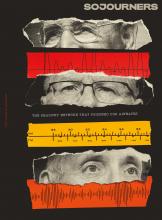ON MARCH 25, 1911, the prominent British suffragette Sylvia Pankhurst, visiting the U.S. on a speaking tour, was suddenly notified about a grotesque tragedy on New York’s Lower East Side. In what would come to be known internationally as the Triangle Shirtwaist Factory fire, 146 immigrant garment workers—mostly women—had died. Locked inside the workplace, they had no chance of escape. The event changed Pankhurst’s life.
At this point, Pankhurst had already been in disagreement with her mother and older sister over their positioning of the Women’s Socialist and Political Union, a women’s suffrage advocacy group where she also worked. Her mother and older sister were moving it away from its leftist roots, marginalizing working women and emphasizing the role of wealthy women whose prominence helped drum up great media coverage for the cause.
In New York, however, Sylvia was getting deeply involved with militant working-class women tired of being pushed aside by blue-blooded suffragettes. The laundry workers’ strikes greatly impressed Pankhurst, as did the garment workers’ determination to make sure employer abuses like those that caused the Triangle fire deaths never happened again.
Read the Full Article

